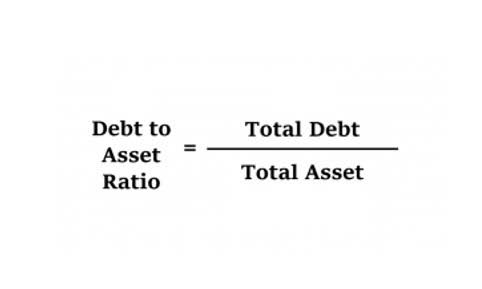
This page includes information about these cards, currently unavailable on NerdWallet. The information has been collected by NerdWallet and has not been provided or reviewed by the card issuer. With a 50% debt-to-income ratio, you’ll struggle to qualify for any type of loan. Your lender or insurer may use a different FICO® Score than FICO® Score 8, or another type of credit score altogether.
- Each month you also pay $500 toward your car loan, $150 toward your student loans and $200 toward credit card bills.
- Lexington Law Firm is here to help you by providing a variety of articles related to various financial topics.
- This is because while all companies must balance the dual risks of debt—credit risk and opportunity cost—certain sectors are more prone to large levels of indebtedness than others.
- Your debt-to-income ratio is the percentage of your monthly income that goes toward paying debt.
- Your gross monthly income is the total pretax income you earn each month.
- For more information about or to do calculations involving a credit card, please visit the Credit Card Calculator.
- You pay $400 a month for your student loans and have no other debt.
How to calculate DTI
- Your DTI ratio is too high if it exceeds your lender’s max DTI ratio, making you ineligible for the loan.
- Bankrate has partnerships with issuers including, but not limited to, American Express, Bank of America, Capital One, Chase, Citi and Discover.
- You’d then get a higher interest rate — and, thus, higher monthly payment — to account for that extra risk.
- You do not need to share alimony, child support, or separate maintenance income unless you want it considered when calculating your result.
- Hefty debt obligations equal high risk, and borrowers with DTIs at or above 50% may have limited loan options and/or difficulty securing a loan.
Your debt-to-income ratio is the percentage of your monthly income that goes toward paying debt. There is no cost to submit a loan request, get matched Bookkeeping for Startups with lenders and receive conditional loan offers or quotes. You may review the conditional loan offers or quotes and talk to the lenders at no cost.

How to Calculate Debt to Income Ratio?

From high-yield savings accounts to cashback checking and sign-up bonuses, we bring you the best banking offers to grow your money smarter. Our online loans are the fastest way to borrow money when you need it most. However, we have many branch locations staffed with friendly and knowledgeable financial professionals to walk you through the application process and answer all your questions. However, you should not include variable expenses that change amounts from month to month, such as grocery costs, utility bills, or entertainment fees.
Example DTI scenario and calculation

It’s a percentage that lenders use to assess your ability to handle a mortgage payment alongside your existing financial obligations. Your debt-to-income ratio (DTI) is all your monthly debt payments divided by your gross monthly income. This number is one way lenders measure your ability to manage the monthly payments to repay the money you plan to borrow. Also known as the housing ratio, contribution margin the front-end ratio focuses on housing costs relative to income. It shows the percentage of gross monthly income that goes to housing expenses (mortgage payments or rent, property taxes, homeowners insurance and homeowners association fees).
What Is Your DTI Ratio Used For?

Higher ratios indicate mounting debt obligations, which can hurt your credit score. As a result, your credit utilization ratio can correlate with your DTI because they both reflect how much debt you’re currently managing. Larger ratios suggest a borrower’s higher risk of overextending themselves financially. If you shifted funds from your high-interest cards to one with a lower rate, your monthly payments will reduce.
Eliminate your existing debts
For example, a back-end DTI of 35% or less usually shows that you are comfortable with your current debt payments. And you also have enough money leftover for daily spending and other financial goals. The higher your DTI ratio, the more likely you are to struggle with qualifying for a mortgage and making your monthly mortgage payments. You’ll want to keep your DTIs as low as possible, regardless of lenders’ limits. Paying down debt will help improve your credit score, and a higher credit score and lower DTI ratio debt ratio formula will help you get a better mortgage interest rate.
- If your income changes from month to month, you can use your average monthly income from the past year to calculate your DTI ratio.
- You can use our calculator to check your DTI ratio and start planning toward your financial future.
- The best method for paying off debt will depend on your needs and goals.
- The result helps lenders determine loan terms like the loan amount and interest rate — and determine how easily someone can repay loans.
- When you file for an auto, mortgage, or other type of loan, lenders and banks use this ratio to evaluate how much of your income will suffice for your current debt obligations.
This percentage can give you an idea of where you are financially, and where you would like to go. It is a valuable tool for determining your most comfortable debt levels and whether you should apply for more credit. Juggling multiple high-interest debts can take a toll on both your financial health and mental well-being.

Recent Comments